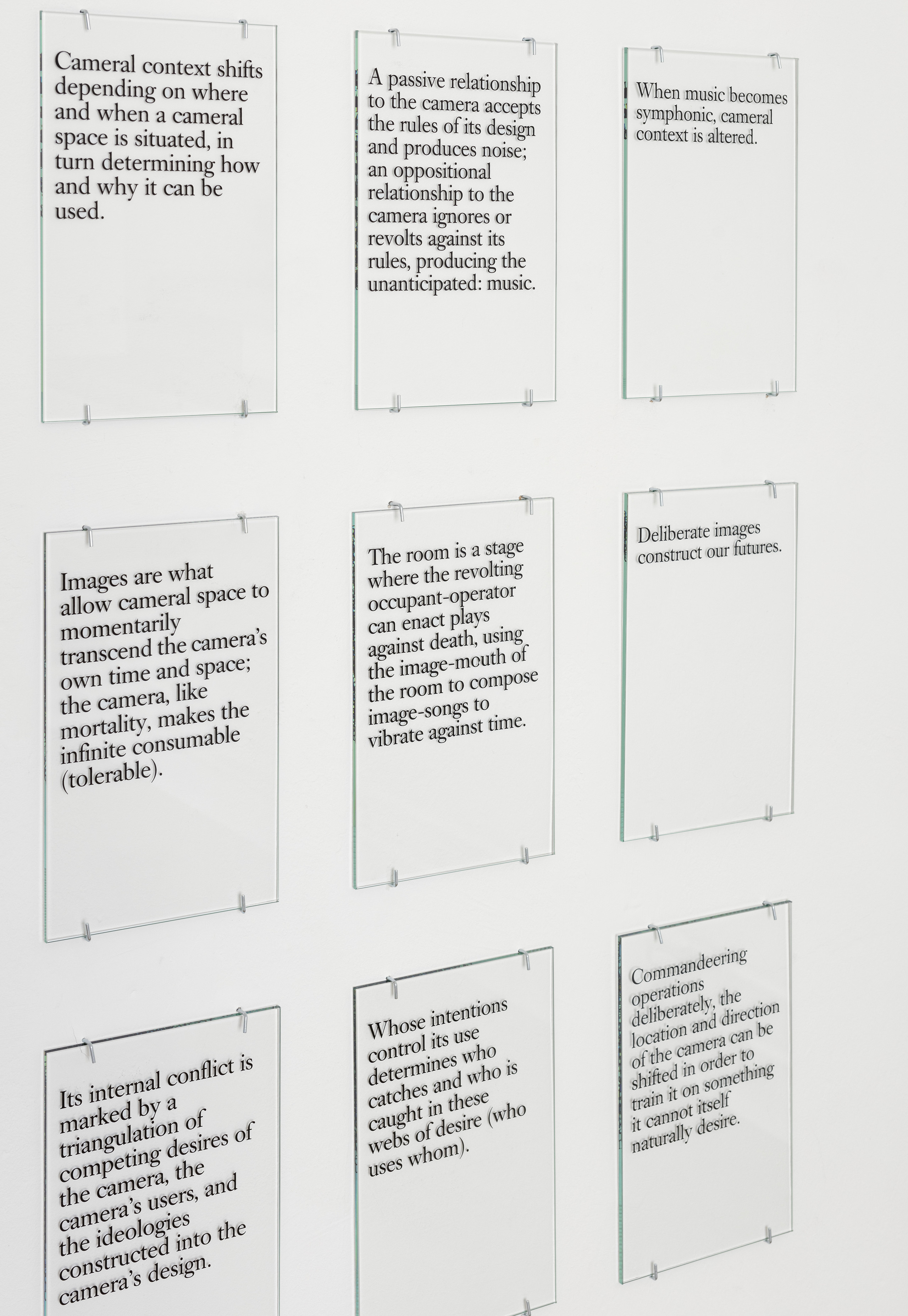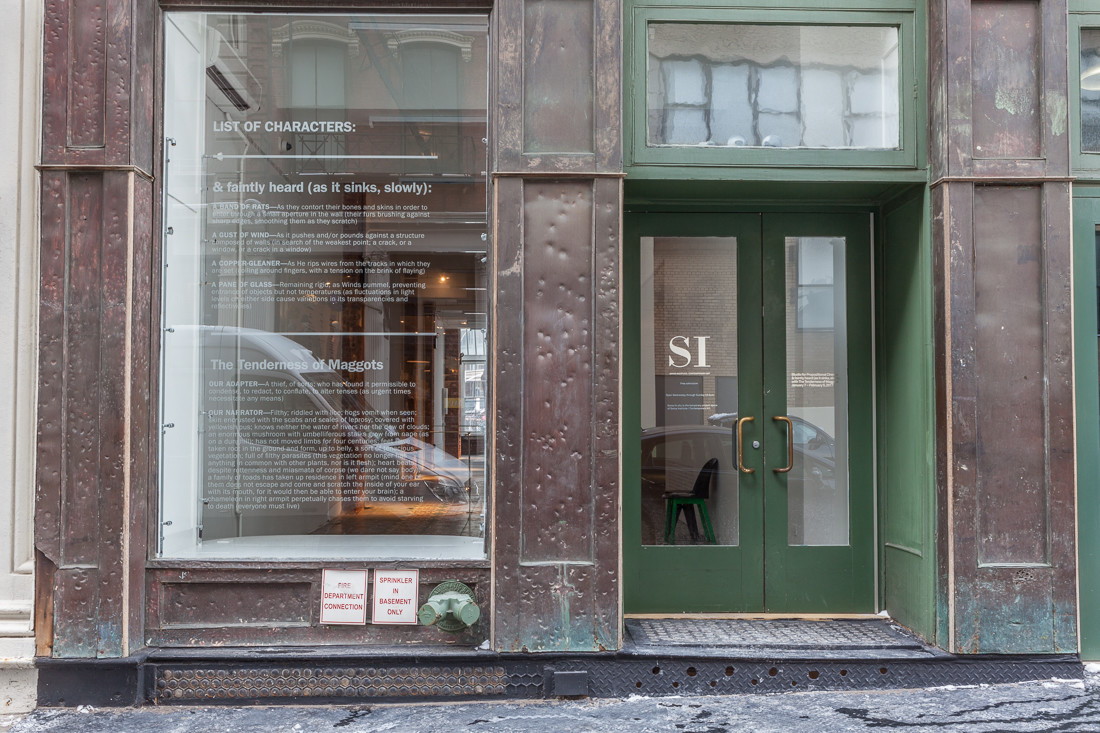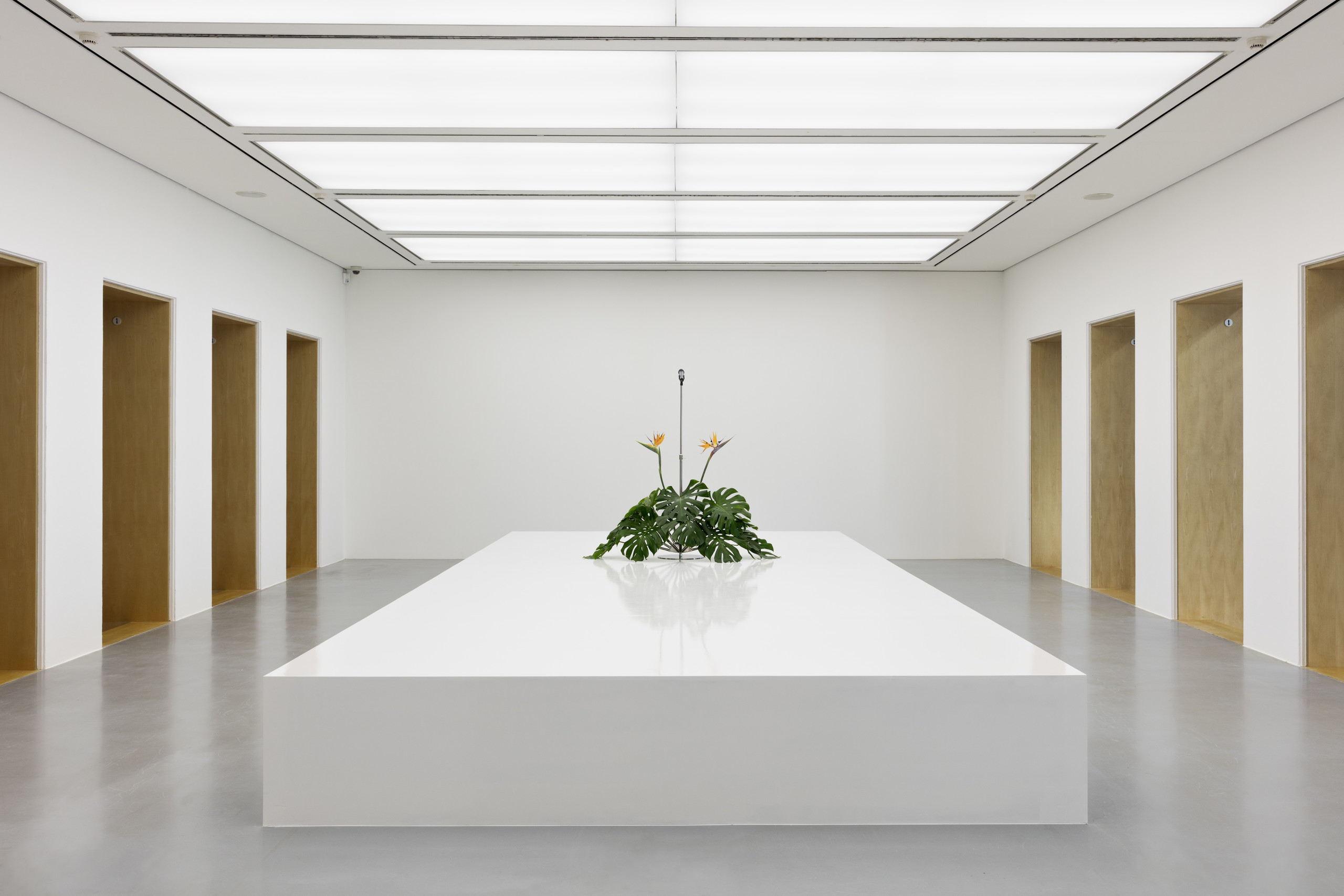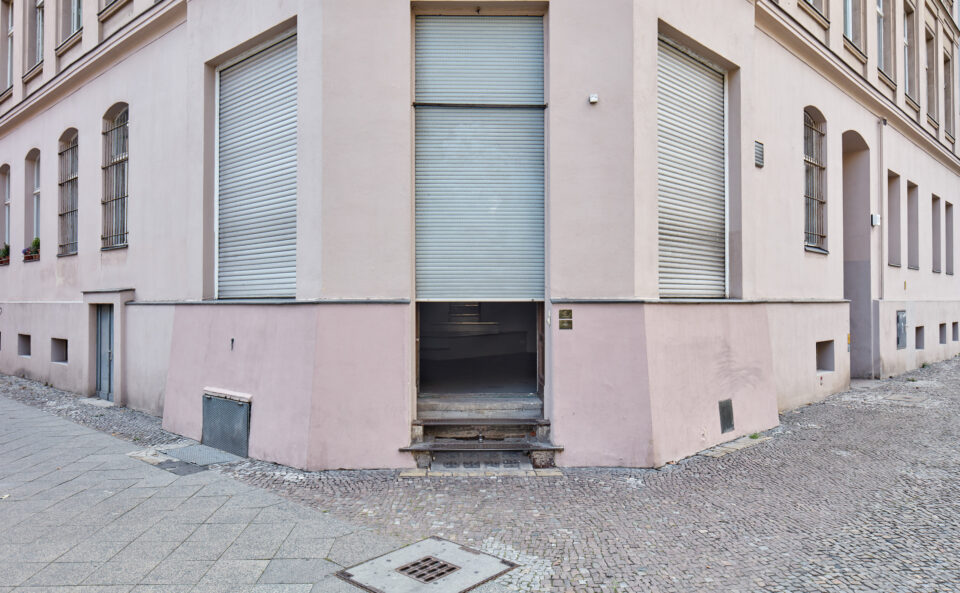“Ideologues weaponise truth to make it indistinguishable from untruth, but their fictions are counter-fantastic, designed to mitigate hope. So the fantastical must be approached scientifically, and science fantastically: identification through replication, understanding through examination, utilisation through reconfiguration. Vaccines contain disease.”
Excerpt from ‘Fabulist Manifesto’ by Studio for Propositional Cinema
It is rare today to find work that adopts the tenacity and dedication to criticism, in and of itself, that you can find in that of Studio for Propositional Cinema (SPC). The anonymised collective produce text-based work that operates between the boundaries of film-making, film criticism, cultural theory and contemporary art.
Working in the tradition of conceptual artists of the 1960s and 70s, as well as that of Dada and the Situationists, SPC produce manifestos, texts, installations and performance. The work takes contemporary modes of viewership, participation, spectacle and production as its subject. Much of it dissecting the multitude of ways these modes diffuse themselves throughout contemporary art, politics and popular culture.

In my practice, I have most often characterised my interest in Sculpture by hazarding (a 4H pencil sketch of) a definition toward it, that ‘Sculpture is possibility’. The notion of possibility is a vital seed from which my practice stems and branches off into strands of method such as improvisation, appropriation, refusal and assemblage. Behind all of this is, essentially, a constant act of proposition that suggests and determines how I may go on to produce a piece of work (in so by doing to better understand why I think the way I think/feel the way I feel to then make more work and so on – a homely loop called process).
SPC are an entity of great interest to me – that in their very nature, artistically, they foreground the notion of possibility and the act of proposition. Their name, however, is not to denote a practice dedicated solely to discourse on cinematic practices or film theory – rather an acceptance that life already and therefore the art world born from it, a work of cinema. As with many artists in the last 10 years, SPC take a radical approach to performativity – utilising it as a conceptual anchor with which they tackle issues of visuality in relation to life today. Where I think they succeed is their ability to straddle the ambiguous line between performativity and formalism – managing to create work both critically striking and aesthetically subsuming. Moreover, how their work exhibits a reflexive awareness of its position (aesthetically, socially, canonically, politically etc.) is something I strive to achieve within my own practice.

SPC are perhaps best known for their innovative approach to exhibition design. They continually test the boundaries of the gallery, the museum and the institution of the exhibition itself by operating in a way that subverts the consumerist, spectacle-driven programming that has become a mainstay of major gallery shows in the last 10 years. SPC’s exhibitions are antithetical to what I term ‘events art’ – the latest, most immersive, interactive scale-busting installation blockbusters by typically ‘singular’, often male artists (think Olafur Eliasson at Turbine Hall, Jordan Wolfson regrettably everywhere, Kusama’s Infinity Rooms etc.) could not be further away from the austere, forensic atmospheres Studio for Propositional Cinema create.
For example, their exhibition ‘In Relation to a Spectator’ at Kestnergesellschaft in Hannover during 2017 involved over 30 artists, connected to but not a part of, SPC or the gallery, whose works were put on display for very specific and limited periods of time throughout the exhibition’s run. The continually sparse and evolving presentation of works were punctuated with occasional, fleeting performances enacted by SPC. All of this took place under or in line with SPC’s text, eponymous of the exhibition, which was a culmination of years of research into narrative, myth, storytelling and how power works – explained succinctly through four categories: Script, Inscription, Scenography & Duration. The formal, almost instructional breakdowns of each category lend the reader not just insight into how to view the work but how to view everything around them, long after they leave the gallery.
‘In Relation to a Spectator’ is a perfect example of what I am talking about when I talk about building context. It’s the exhibition as scenario machine. I love it. Space is shaped, time is made and vice versa. One is aware they are participating in something but only in as much as they would like to. Each person’s embodied spectatorship is foregrounded, allowing that spectatorship to be examined. It is a crucial re-evaluation of what it is to ‘look at’ or ‘experience’ art. In regards to the text, the Studio states: “This book is part of an ensemble of structures related to the nature of presentation in the Kestner Gesellschaft exhibition. Visually connected in their ultra-gloss white surfaces, they are meant to be seen as intertwined sites for the display of objects, the reproduction of images, the staging of performances, and the transmission language through talks and conversations.”

This radical approach to site, discipline and curation forms my understanding of what SPC term ‘Dialogic Space’ in their ‘Focal Vocabulary Index’. My interpretation of dialogic space is what creates for me an initial footpath toward better understanding my interest, if not desire for, utilising or working with context as a material within my practice. That interpretation is essentially an acknowledgement that all space is ultimately designed. For one to designate a space that is to in some way design it. Therefore, there is a political implication here. Wherever we design space or inhabit a space designed, we must be aware of what it means to converse or commune there and how this reproduces social power dynamics. Space is fundamentally a tool of political, economic and social power. And so, some who speak in some spaces may do so louder or with less repercussions than others. Whether I consider Dialogic Space to be a case in which one enters into dialogue with another within that space or one enters into dialogue with the space itself, I am still to determine. However, the embrace of the performative inherent to all spaces and the capacity of that performativity to lend itself to emancipatory ends is something I will continue to pursue.
Featured Image: '(TO THE SPECTATOR:)', 2016, by Studio for Propositional Cinema, Installation view, Tanya Leighton, Berlin.


